Is Wichita Falls' famous 'skyscraper' more tall tale than historical fact?
Question: Which is taller – the Littlest Skyscraper or the tales about it?
It’s a fact that the building that earned that nickname exists near the railroad tracks in downtown Wichita Falls, but the tales of its origin are a little short on fact. Adding to the intrigue are newly surfaced vintage photographs acquired by the Wichita County Archives.
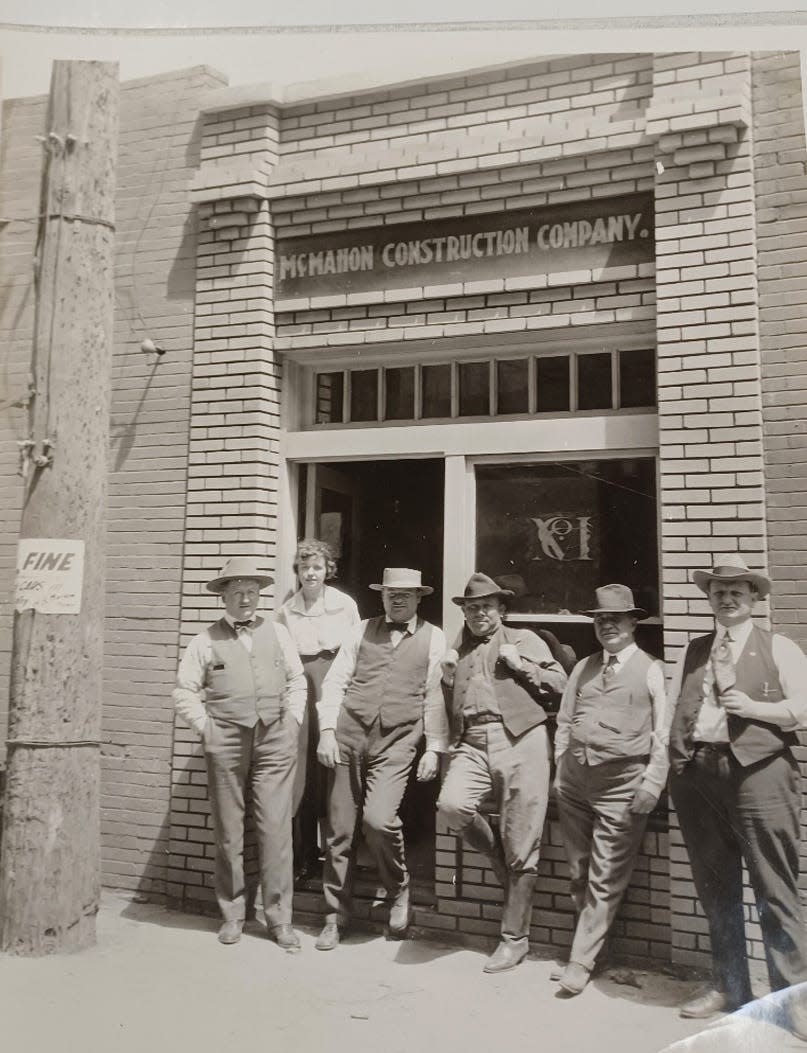
The building in the alley at 511 Seventh St. consists of four small rooms stacked on top of each other. Legend has it the diminutive structure was a real estate swindle. It’s a fact that office space was at a premium when the pint-sized edifice was erected about 1919 at the height of an oil boom.
More: Do you know what these places were in an earlier life?
More: All in a day's work: The Daytripper films season finale showcasing Wichita Falls
The legend most Wichitans know
According to the oft-told tale, blueprints were measured in inches rather than feet. Eager to cash in on the boom quickly at the expense of reading the fine print, gullible investors ponied up $200,000, a grand amount at the time. By the time they discovered they had been duped, the building’s promoter, J.D. McMahon, had taken the cash and skedaddled.
More: Once popular motel may have a date with demolition
Shorter from the start
In fact, photos prove it was originally a lowly one-story building in McMahon's time and the other floors were added later.
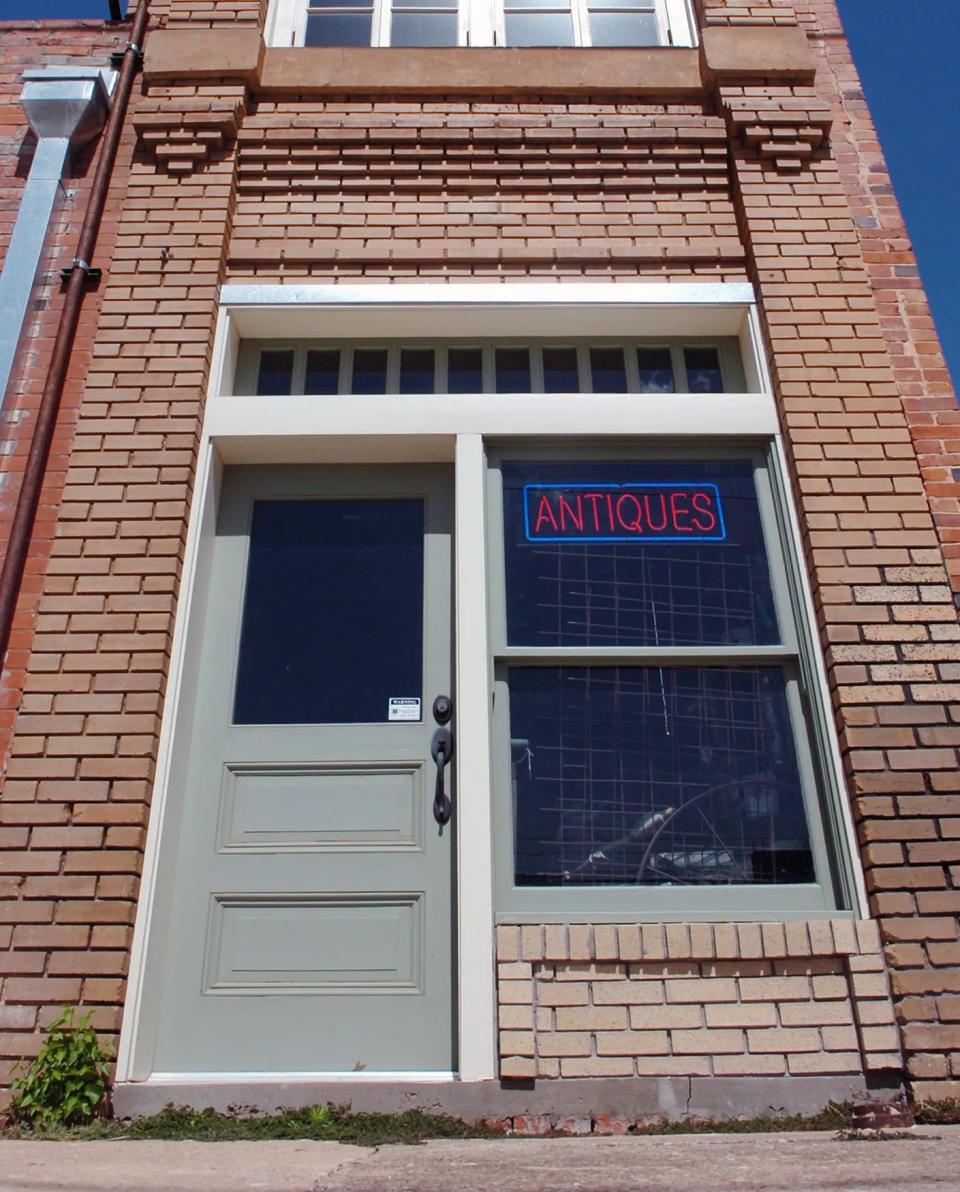
The swindle is an intriguing anecdote that has given birth to widespread notoriety and made the building a must-see attraction. But over the past century nobody has found any evidence it really happened.
More: City board OK's $49,000 for old hotel building renovation
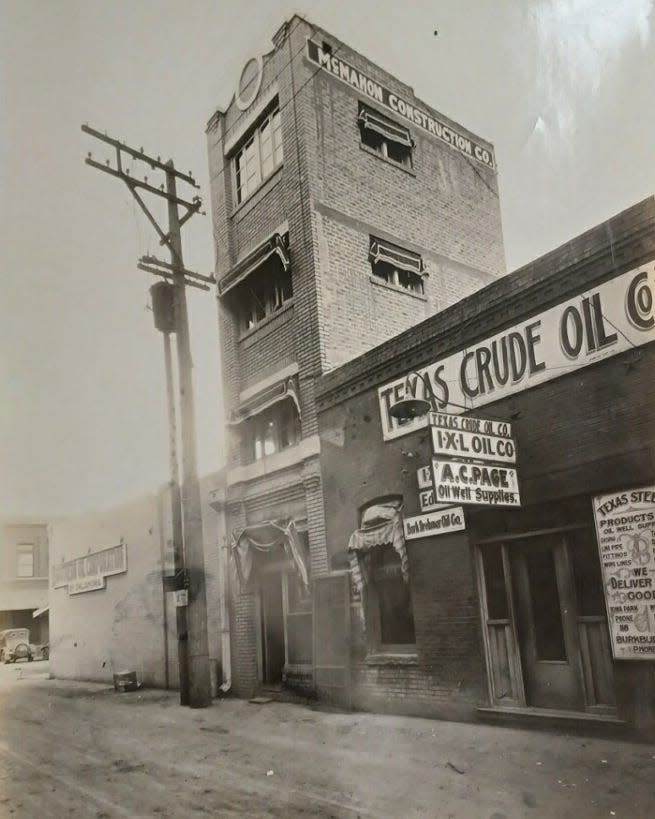
‘Highly suspicious’
Robert Palmer, president of the Wichita County Historical Commission, has researched the stories about the little building in depth and has doubts.
More: 100 years ago today: The Gunfight in the Falls
“People at that time who were investing a large sum of money would have studied it carefully,” he said of its founding. “In all the things I’ve read, I’m highly suspicious it was a real scheme.”
More: Once a pair of banks dominated Wichita Falls' wealth and downtown skyline
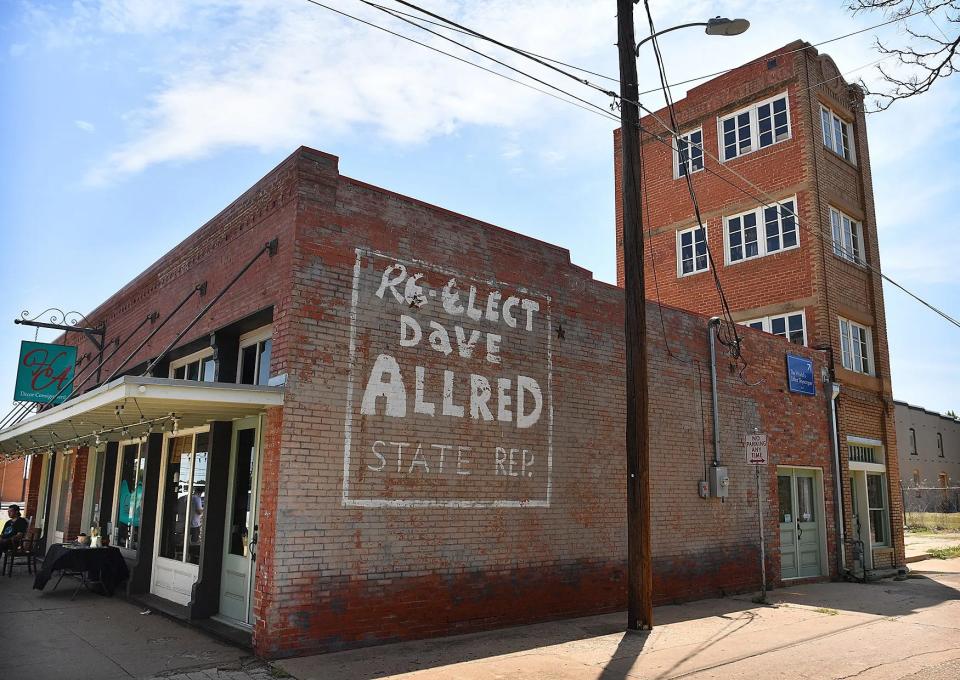
The Travel Channel sent a crew to Wichita Falls in 2014 to tape a dramatized segment about the building, complete with local actors in period costumes. They used Palmer as their local expert, but rather than have him offer his knowledge, Palmer said they handed him a script and had him read it.
More: The Santa Claus Bank Robbery: How Christmas went terribly wrong for some Wichita Falls bandits
More: Bellevue bandit's story almost lost to history
Efforts over the years to find court records of a purported lawsuit filed by angry investors have been fruitless.
“There’s no evidence any court documents were ever filed,” Palmer said.
More: Dillard's goes dark after 48 years at Sikes Senter
Another tale has Robert Ripley, founder of the Ripley’s Believe It Or Not newspaper feature, visiting Wichita Falls right after the building was erected and tagging it with the Littlest Skyscraper moniker. Despite lots of looking, no one has found any evidence that Robert Ripley ever visited Wichita Falls, much less put the building in one of his syndicated newspaper panels.
Legend not in the news for years
The archives of the Wichita Daily Times mention the building frequently in stories from the era, but speculation about a swindle or a Ripley's mention is not reported until years later when the legends had taken root.
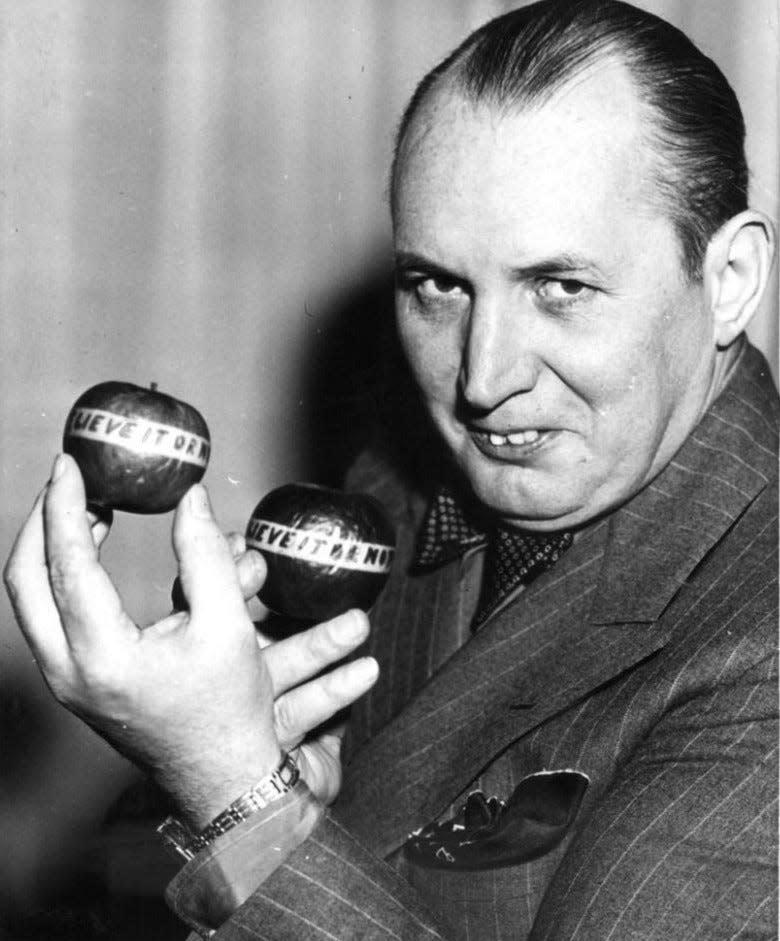
J.D. McMahon appears to be a real person who arrived in Wichita Falls in about 1919 from Virginia or Amarillo or both (take your pick) and did business as an oilman or builder or both (take your pick). Or maybe he was a structural engineer from Philadelphia. The tale has McMahon sharing office space in the Newby Building on Seventh Street and without permission from the owner, using his oilfield crew to build a structure 10 feet wide by 16 feet long by 40 feet tall on a small plot of open land at the rear. The swindler version of the story has him abruptly leaving town after investors he had lured learned of the scheme.
More: Professional Wrestling museum's vanishing leaves trail of questions
New photos shed light on old tale
The Wichita County Archive recently received old photos of the building that had been left to a family in Kentucky by an ancestor who had worked in the oilfields in the area. One photo appears to show the building when it was a single-story structure with McMahon's name above the door. McMahon may be among the people standing at the doorway. A second picture shows the building after the upper floors had been added. “McMahon Construction Co.” is visible in a sign at the top.
So maybe he hung around and tacked on a few extra floors before he split town -- or not.
Palmer found evidence a J.D. McMahon did leave Wichita Falls for a while, but then returned.
He is something of a mystery man. A J.D. McMahon appeared in lawsuits at a time when litigation was as common as oil deals. None of the mentioned lawsuits is connected to the little brick building.
A Mrs. J.D. McMahon showed up frequently in society articles in an era when proper ladies discarded their first names and personal identities in deference to their husbands.
Whether J.D. McMahon was a creative swindler or was unfairly maligned by lore is a matter that’s lost to time and open to conjecture.
If bricks could talk
Legends aside, if brick walls could talk, the Littlest Skyscraper could tell some humdingers about the Golden Age of Wichita Falls when million dollar oil deals were made in saloons and on street corners.
Its original address was on LaSalle Street, which was never much more than an alley off Seventh Street between the little building and the elegant St. James Hotel. The little street was commonly referred to as “U.D. Alley” after a popular hair tonic that substituted as a refreshing beverage during Prohibition. The alley got the nickname because it was always littered with broken U.D. bottles when the sun rose.
The St. James Hotel is gone but a historical marker notes its former location next to Gidget’s Sandwich Shop. The little skyscraper has no historical marker.
A hot spot in its day
Tom C. Medders, an early day oilman who spent time in the stature-challenged building, reported it had ladders rather than stairs for accessing the upper floors. Regardless of its shortcomings, it was a beehive of activity in its heyday.
Advertisements and news articles show it housed a variety of occupants: a transfer and storage business, oil companies, a home design business, a tax service, a café and an office for news agents who rode the trains.
Surviving fire and politicians
Its life as an office building was relatively short, though. Fire swept through it in 1931. Its doors were sealed and rooms were empty for four decades, receiving business only from pigeons.
Palmer, who is familiar with construction, has visited the structure and said it was built well, enabling it to survive while many a larger and grander building vanished from the skyline.
A greater threat than fire came from local politicians. The City of Wichita Falls acquired the building and condemned it to the wrecking ball in 1968. Guy and Delores Matthews bought and saved it, but the city went after it through power of eminent domain. A judge approved the takeover, but ruled the city must preserve it as a historic site. The city later tried to sell it but got no takers.
As interest grew in preserving the city’s downtown history, the city turned it over to the Wichita County Heritage Society. The society sold it back to private interests in 2000.
Many plans for the building have been suggested over the years, including housing a Coca-Cola memorabilia museum.
Now it has settled into a quiet existence as part of a consignment business in the Depot Square Historic District.
Much of its story may be no more than legend and lore, but it's not outside the realm of possibility that the town that in fact launched Charles Ponzi of Ponzi scheme fame could also produce a relatively modest swindler like J.D. McMahon.
Even if the story of the Littlest Skyscraper is largely fabricated, myth plays an important role in any culture.
England may boast of its Camelot but cannot prove it ever existed.
Wichita Falls can point to its Littlest Skyscraper, which does in fact exist.
It still stands proud -- and somewhat tall.
This article originally appeared on Wichita Falls Times Record News: Is Wichita Falls' famous 'skyscraper' more tall tale than historical fact?

